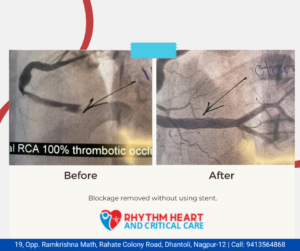Pulmonary hypertension cannot be cured, but treatments can reduce your symptoms and help you manage your condition.
If the cause is identified and treated early, it may be possible to prevent permanent damage to your pulmonary arteries, which are the blood vessels that supply your lungs.
Not everyone is a candidate for Pulmonary Thromboendarterectomy (PEA) surgery. Your doctor may determine that PEA surgery is not right for you for reasons such as the blockages in your pulmonary arteries cannot be reached by the surgeon and are therefore inoperable.
Your Chronic Thromboembolic Pulmonary Hypertension (CTEPH) team has decided, based on your overall health or other conditions, that the risk of surgery is too high. Even after PEA surgery, you may still experience some symptoms of CTEPH. Also, PEA surgery does not always cure CTEPH. Several studies found that CTEPH came back in approximately 1 out of 10 people who got the procedure. This is known as recurrent CTEPH.
Are any medical treatments available?
As with so many diseases, medical science is always looking for new treatments. Speak to your doctor about the best options for you, and he or she may be able to keep you up-to-date with any new therapies that become available.
What other treatments are available in pulmonary hypertension?
As with many diseases, medical science is always looking for new treatments. One such treatment is the use of balloon pulmonary angioplasty, or BPA, to treat select patients with inoperable CTEPH. BPA uses a balloon catheter to make the arteries larger, allowing blood to flow through.
PEA is the only potential cure for CTEPH, so it remains the gold standard for treatment. BPA has been performed for people who have CTEPH but can’t have a PEA, and more research is needed on the long-term effects.
Talk to your doctor about the best options for you.
Chronic Thromboembolic Pulmonary Hypertension (CTEPH) treatment includes Anticoagulants, which are commonly called blood thinners. Anticoagulants can help prevent clots from forming in the blood stream.
CTEPH is potentially curable by a type of surgery called PEA, or Pulmonary thromboendarterectomy. If you’ve been diagnosed with CTEPH, your healthcare team will determine if PEA surgery is right for you. Although PEA is the recommended treatment for CTEPH, not everyone is a candidate. Even after PEA surgery, you can still experience CTEPH symptoms.
As with so many diseases, medical science is always looking for new treatments, and oral medication has become available for a certain patient population. Speak to your doctor about the best options for you, and he or she may be able to keep you up-to-date with any new therapies that become available.
Chronic Thromboembolic Pulmonary Hypertension (CTEPH) is a complication of pulmonary embolism and a major cause of chronic PH leading to right heart failure and death. Lung ventilation/perfusion scintigraphy is the screening test of choice; a normal scan rules out CTEPH.
Dr. Manish Juneja
Senior Consultant Cardiologist
Rhythm Heart and Critical Care






